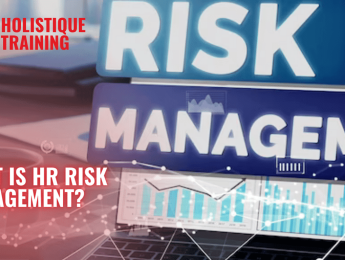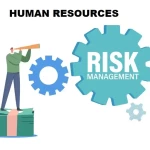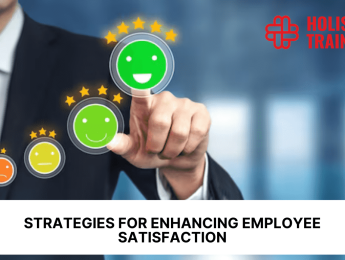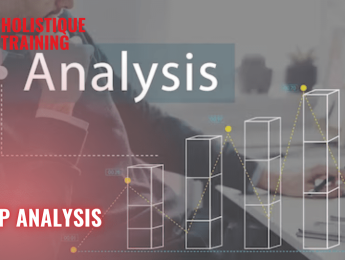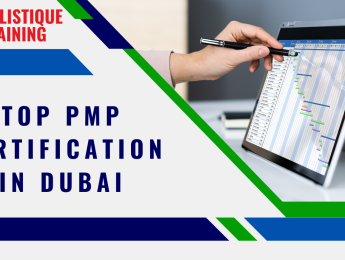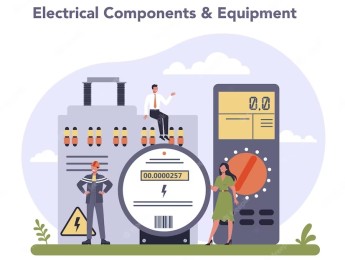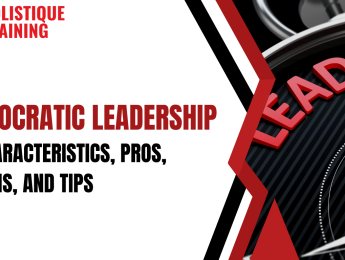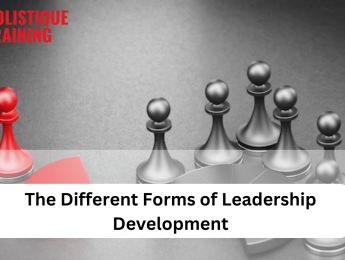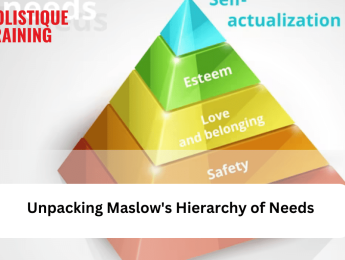The heartbeat of any organisation lies in its human resources – the talented individuals who propel its growth and innovation. However, with great potential comes inherent risks. Human resources risk management is the compass that guides organisations through the turbulent waters of employee-related challenges, ensuring smooth sailing towards their goals. In this comprehensive exploration, we delve into the realm of HR risk management, unravelling its essence, elucidating its importance, and providing a roadmap for its effective implementation.
What Is HR Risk Management?
Imagine an organisation as a ship navigating the unpredictable seas of business, with its crew being the valuable human resources onboard. HR Risk Management is the compass guiding this voyage. It's not just about avoiding legal entanglements; it's a strategic process that anticipates, evaluates, and tackles potential risks arising from HR activities.
At its core, HR Risk Management involves a systematic approach. It starts with identifying risks across the spectrum of HR operations, from compliance to culture. These risks are then evaluated for their potential impact and likelihood. Next comes the implementation of proactive strategies that can range from policy enhancements to comprehensive training, all aimed at mitigating identified risks.
The importance of HR Risk Management cannot be overstated. It ensures legal compliance, safeguards employee well-being, and nurtures a robust company culture. Just as a skilled mariner adapts to changing weather conditions, HR Risk Management constantly monitors and adjusts its strategies to navigate the evolving waters of HR challenges. In essence, it's the unwavering guardian of an organisation's most vital asset: its people.
10 Reasons Why Risk Management Is Important in HR
Legal Compliance and Regulations
The labyrinth of employment laws and regulations is intricate and ever-evolving. HR risk management acts as a knowledgeable guide, ensuring organisations navigate this complex terrain without running afoul of the law. Vigilant adherence to labour laws, anti-discrimination statutes, and industry regulations is not just a legal requirement but a strategic imperative. Non-compliance can result in not only costly lawsuits but also severe damage to the organisation's reputation, making legal compliance the cornerstone of effective HR risk management.
Preserving Employee Well-being
A harmonious workplace is a breeding ground for productivity and innovation. HR risk management goes beyond the standard compliance checklist; it is instrumental in fostering a safe, respectful, and supportive work environment. By proactively addressing potential risks to employee well-being, such as workplace harassment or inadequate safety measures, HR ensures that employees feel valued, satisfied, and engaged. The result is not only a compliant organisation but one that thrives on the collective well-being of its workforce.
Mitigating Turnover
Employee turnover can be a silent leak, draining an organisation of valuable resources and expertise. HR risk management acts as a diagnostician, identifying the root causes of turnover and prescribing effective remedies. Whether it's inadequate training, unclear expectations, or limited growth opportunities, HR addresses these issues head-on. By doing so, it not only retains talent but also fortifies the organisation against the costs associated with recruitment and onboarding.
Safeguarding Company Culture
An organisation's culture is its identity, and HR risk management serves as its custodian. Recognising potential threats to the organisational culture – be it through poor leadership, inadequate communication, or a misalignment of values – is crucial. By addressing these risks, HR ensures that the cultural fabric remains intact and vibrant. This commitment to preserving the company's identity translates into a motivated workforce and an organisation that stands resilient in the face of change.
Protecting Data Security
In the era of digitisation, the security of employee data is of paramount importance. HR risk management takes on the role of a cybersecurity architect, implementing robust data protection strategies. These strategies may include encryption, restricted access, and strict compliance with data privacy regulations. By safeguarding both organisational and employee data, HR mitigates the risk of data breaches that can have far-reaching consequences, both legally and reputationally.
Managing Conflict
Conflicts in the workplace are inevitable when diverse personalities converge. HR risk management steps in as a mediator, not merely resolving conflicts but preventing them from escalating into legal disputes. By providing effective conflict resolution mechanisms and fostering a culture of open communication, HR minimises legal liabilities, boosts morale, and ensures a cohesive work environment.
Enhancing Recruitment and Selection
The recruitment process is not without its own set of risks, particularly the risk of hiring unqualified candidates. HR risk management transforms the recruitment process into a strategic endeavour. It establishes stringent screening processes, verifies credentials rigorously, and conducts thorough interviews. By doing so, it ensures that each addition to the workforce is not just a warm body but a valuable asset, minimising the risk associated with hiring mismatched talent.
Optimising Performance Management
Biassed evaluations can tarnish the effectiveness of performance management efforts. HR risk management advocates for transparent and unbiased assessment practices. This involves regular feedback, opportunities for skill development, and a commitment to fair evaluation processes. The result is a workforce that grows both individually and collectively, driving overall productivity and organisational success.
Crisis Preparedness
HR risk management is not solely concerned with day-to-day operations; it extends its gaze towards the horizon, anticipating the unexpected. Whether it's a natural disaster, a public health emergency, or a sudden leadership change, HR ensures that the organisation is prepared. Developing and regularly updating contingency plans is essential for navigating through turbulent times, minimising disruptions, and maintaining organisational resilience.
Boosting Reputation and Trust
An organisation's reputation is intricately linked to how it treats its employees. HR risk management is an investment in ethical practices, signalling the organisation's commitment to fair treatment. This commitment pays dividends in the form of trust, not only from employees but also from stakeholders. In the eyes of the public, an organisation that prioritises HR risk management is one that can be trusted, fostering goodwill and loyalty that contribute to long-term success.
Each of these reasons paints a picture of HR risk management as the captain of a vessel – attentive, forward-looking, and adept at steering clear of rocky shores. It's not just about averting disasters; it's about charting a course that celebrates the potential of human resources while safeguarding the organisation's interests. As an organisational pillar, HR risk management's impact reverberates through the tides of productivity, culture, and legal compliance, securing the journey towards sustainable success.
Implementing an HR Risk Management Plan
Creating a robust HR Risk Management plan is a strategic imperative for organisations aiming to navigate the unpredictable waters of human resources with confidence. The successful implementation of such a plan involves a systematic and meticulous approach, ensuring that the organisation is well-prepared to identify, assess, and mitigate risks effectively. Let's delve into the key components of implementing an HR Risk Management plan:
1- Risk Identification
The initial step in implementing an effective HR Risk Management plan is thorough risk identification. This involves a comprehensive review of existing HR processes, policies, and historical data. However, the process goes beyond mere documentation; it requires the involvement of cross-functional teams to gain diverse perspectives. The aim is to uncover potential risks across the entire spectrum of HR operations, from recruitment to employee relations. By fostering collaboration among different departments, the organisation gains a holistic view, ensuring that no potential risk remains hidden.
2- Risk Assessment
Once identified, risks must be evaluated for their potential impact and likelihood. Not all risks are created equal, and prioritisation is key. HR must collaborate with relevant stakeholders to assess each identified risk's potential to disrupt organisational goals. This involves a nuanced understanding of the organisational landscape and the ability to differentiate between risks that pose immediate threats and those that may manifest in the long term. This prioritisation sets the stage for targeted and effective risk mitigation strategies.
3- Risk Mitigation Strategies
Armed with a prioritised list of potential risks, the next phase involves the development of strategic mitigation plans. These plans can encompass a wide array of actions, from revising existing policies and procedures to investing in technology solutions or adopting preventive measures. The key is to tailor strategies based on the nature and severity of each identified risk. For instance, if the risk pertains to data security, the organisation might invest in encryption technologies and conduct employee training on cybersecurity best practices. The proactive nature of these strategies positions the organisation to not only address existing risks but to fortify itself against emerging threats.
4- Monitoring and Review
Implementing an HR Risk Management plan is not a one-time endeavour; it requires continuous monitoring and review. Establishing monitoring mechanisms is crucial to track the effectiveness of risk mitigation strategies over time. Regular reviews of the HR Risk Management plan ensure that it remains aligned with the organisation's evolving dynamics. This includes updates to policies and procedures, training modules, and technology solutions to reflect the latest industry standards and best practices. A dynamic and adaptable HR Risk Management plan is a resilient shield against the ever-changing landscape of human resources challenges.
5- Regularly Reviewing and Updating the HR Risk Management Plan
The dynamic nature of the business environment necessitates a proactive stance in HR risk management. Regularly reviewing and updating the HR Risk Management plan ensures that it remains a living document, capable of adapting to shifting organisational priorities and industry landscapes. This process involves revisiting risk assessments, taking into account new information and emerging trends, and incorporating lessons learned from past experiences. Organisations that embrace a culture of continuous improvement in their HR Risk Management practices are better equipped to navigate the complexities of the human resources landscape.
6- Involving Cross-Functional Teams
Implementing an HR Risk Management plan is not the sole responsibility of the HR department. To ensure a holistic approach, cross-functional teams should be actively involved. These teams bring diverse perspectives, insights, and expertise from various departments, contributing to a more comprehensive risk identification process. This collaboration fosters a sense of shared responsibility and accountability throughout the organisation, creating a united front against potential risks.
7- Communication and Training
Effective implementation requires clear communication of the HR Risk Management plan across all levels of the organisation. This includes not only informing employees about the plan but also providing training on its elements. Training sessions can educate employees on their role in risk mitigation, the importance of compliance, and the organisation's commitment to fostering a safe and supportive work environment. Transparent communication builds awareness and empowers employees to actively contribute to the success of the HR Risk Management plan.
8- Integration with Organisational Strategy
For optimal results, the HR Risk Management plan should align seamlessly with the broader organisational strategy. It should not be viewed in isolation but integrated into the organisation's overall risk management framework. By aligning HR risk management with strategic objectives, organisations ensure that efforts are coordinated and contribute directly to the achievement of overarching goals. This integration fosters a culture where risk management becomes an integral part of decision-making at all levels.
Implementing an effective HR Risk Management plan requires a concerted effort, strategic vision, and a commitment to continuous improvement. It is not a standalone process but an ongoing journey that demands adaptability and collaboration. Organisations that invest in a well-structured and dynamic HR Risk Management plan position themselves not only to weather storms but to thrive amidst the uncertainties of the business seas.
Table 1: Key Performance Indicators (KPIs) of an HR Risk Management Plan
KPI | Description |
Legal Compliance Assurance | Ensuring adherence to labour laws and regulations. |
Employee Well-being Enhancement | Fostering a safe, respectful, and supportive workplace. |
Turnover Reduction Strategies | Implementing measures to minimise employee turnover triggers. |
Data Security Compliance | Ensuring compliance with data protection regulations and standards. |
Conflict Resolution Effectiveness | Evaluating the efficiency of mechanisms for conflict resolution. |
Common HR Risks & How to Deal with Them
Within the intricate tapestry of an organisation, the realm of human resources is susceptible to a multitude of risks. However, these risks need not be seen as insurmountable challenges; rather, they can be viewed as opportunities for strategic HR risk management to shine. Let's explore some of these common HR risks and the strategies to effectively navigate them.
Discrimination and Harassment
On a global scale, statistics show that 17.9% of employed individuals, both men and women, reported experiencing psychological violence and harassment during their professional tenure. Additionally, 8.5% acknowledged facing physical violence and harassment, with a higher percentage observed among men than women. These numbers, though seem small, are definitely alarming. Discrimination and harassment in the workplace can poison the atmosphere, leading to legal consequences and damage to the organisation's reputation. To mitigate these risks, HR must implement robust anti-discrimination and anti-harassment policies. Additionally, regular training sessions should be conducted to educate employees about appropriate conduct and reporting mechanisms, fostering a safe and inclusive environment.
Employee Misconduct
Workplace misconduct or ethical violations can disrupt organisational cohesion. To address this risk, a comprehensive code of conduct should be established, accompanied by a clear disciplinary process. Regular communication of these policies and conducting investigations when necessary are vital components of mitigating this risk, ensuring a culture of accountability and integrity.
Data Security
With sensitive employee data stored digitally, the risk of data breaches looms large. The solution involves stringent data security measures, including encryption, regular system updates, and employee training on cybersecurity best practices. Adhering to data protection regulations is crucial to avoid legal repercussions and maintain the trust of both employees and stakeholders.
Succession Planning
The sudden departure of key personnel can disrupt operations and growth plans. Mitigating this risk involves developing a robust succession plan that identifies potential leaders within the organisation and offers tailored development opportunities. However, according to a LinkedIn article, merely 35% of companies have established a formalised succession planning process specifically designed for pivotal roles within their organisational structure. By nurturing a pipeline of capable successors, HR minimises the risk of leadership gaps and ensures continuity in critical roles.
Employee Burnout
Burnout not only affects individual employees but also hampers overall productivity. To address this risk, HR must promote work-life balance, offer wellness programs, and encourage open conversations about workload. Proactively addressing burnout fosters a healthier work environment, enhancing employee well-being and sustaining long-term engagement.
Talent Shortage
Industries constantly evolve, and attracting the right talent can be challenging. HR can combat talent shortage risks by diversifying recruitment channels, investing in employer branding, and establishing partnerships with educational institutions to ensure a steady influx of skilled candidates. This strategic approach helps the organisation stay competitive in the talent market.
Performance Management Issues
Biassed evaluations and unclear performance expectations can hinder individual growth and organisational progress. HR can address this risk by providing training on unbiased performance evaluation, setting clear goals, and fostering regular communication between managers and employees. This ensures a fair and transparent performance management process, driving employee growth and overall productivity.
Compliance Violations
Staying abreast of evolving labour laws and regulations is vital to prevent compliance violations. HR should regularly review and update policies, conduct internal audits, and invest in compliance training for employees to ensure adherence. This strategic approach not only mitigates legal risks but also contributes to a culture of compliance within the organisation.
Employee Relations Challenges
Conflicts among employees can disrupt teamwork and morale. To navigate these challenges, HR should establish open channels of communication, offer mediation services, and foster a culture of mutual respect and understanding. Proactive conflict resolution contributes to a positive work environment and curtails potential legal liabilities.
Employee Engagement Concerns
As indicated by a Gallup report in 2020, 51% of employees express disengagement within the workplace, with an additional 13% actively disengaged. Low employee morale and engagement can lead to decreased productivity and increased turnover. HR can address this risk by creating opportunities for professional development, recognising achievements, and soliciting employee feedback to make necessary improvements. Strategic initiatives to boost employee engagement contribute to a positive workplace culture and long-term organisational success.
In navigating these risks, HR risk management resembles a skilled artisan sculpting an organisation's destiny. The key lies in recognising potential pitfalls, devising strategies that align with the organisation's values, and consistently monitoring and adapting these strategies as the organisation evolves. HR risk management transforms challenges into stepping stones for growth, ultimately contributing to an environment where employees flourish, regulations are respected, and the organisation thrives.
Main HR Activities, Potential Risks, and Considerations
HR Activity | Potential Risks | Considerations |
Recruitment | Hiring unqualified candidates | Implement stringent screening processes |
Onboarding | Inadequate training | Develop comprehensive onboarding programs |
Performance Management | Biassed evaluations | Provide training for unbiased performance |
Compensation | Wage disparities | Regularly review compensation structures |
Training & Development | Irrelevant training programs | Align training with organisational goals |
Employee Relations | Conflict escalation | Offer conflict resolution mechanisms |
Health & Safety | Workplace accidents | Regular safety audits and training |
Compliance | Violation of labour laws | Stay updated on evolving regulations |
Succession Planning | Leadership gaps | Identify and groom potential successors |
Employee Engagement | Low morale and satisfaction | Regularly assess employee engagement |
Conclusion
HR risk management is the compass that guides organisations through the intricate terrain of human resources challenges. Its significance lies not only in mitigating potential risks but also in fostering a culture of employee well-being, compliance, and sustainable growth. By effectively identifying, assessing, and addressing HR risks, organisations can navigate the unpredictable waters of the business world with confidence, ensuring that their human capital remains their greatest asset.
As you embark on this enlightening journey of understanding, consider taking our comprehensive course on Human Resources Risk Management. This course equips you with the tools to master the art of identifying, assessing, and mitigating risks, ensuring your organisation sails smoothly towards a future defined by resilience, compliance, and empowered human capital. Enrol today!


